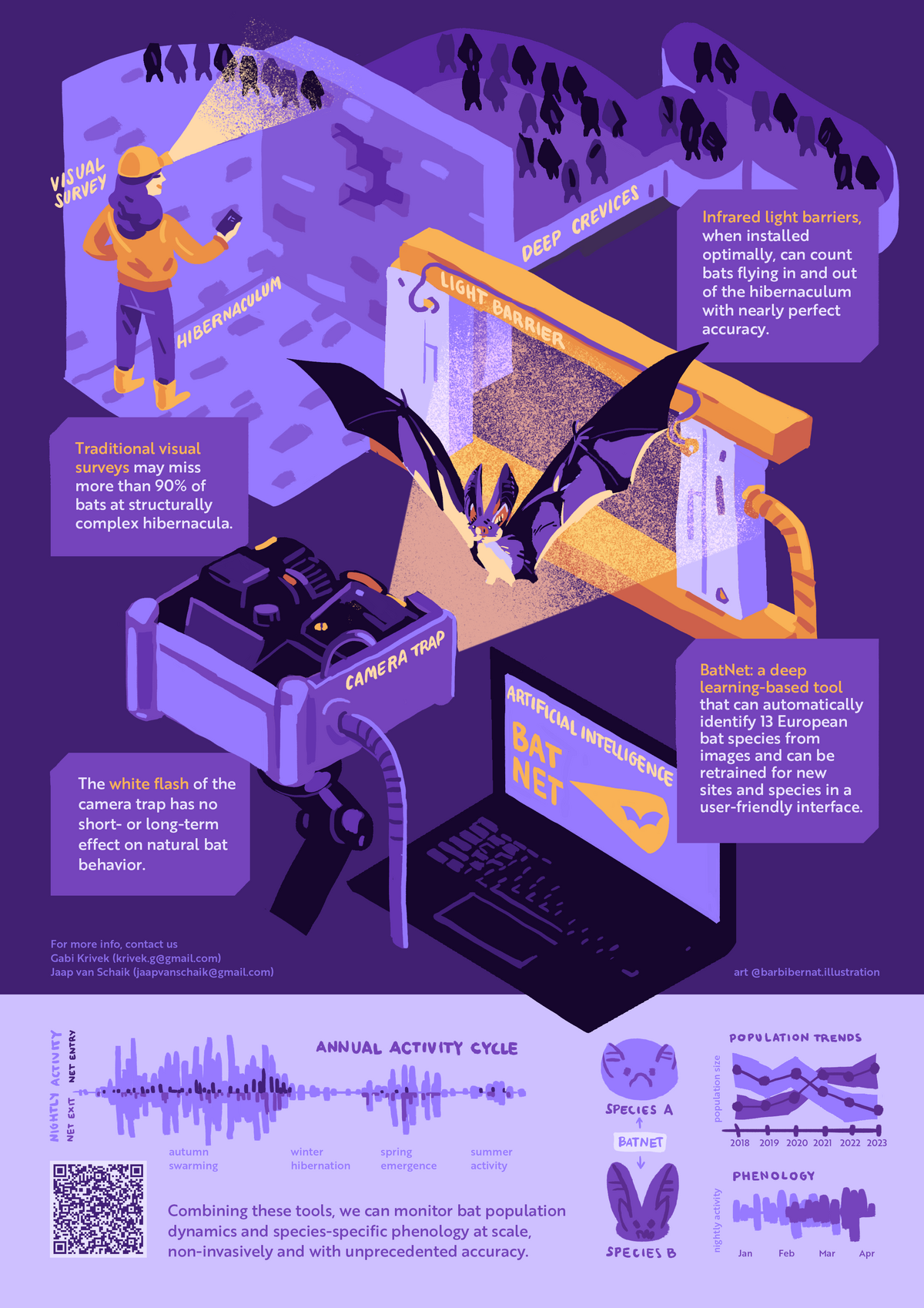Automated identification of bats from camera trap images
The State Excellence Program MV "Digitization in Research" funds the consortium "DIG-IT! Digitization of natural complexity to solve socially relevant ecological problems". Here, a methodological toolbox is to be developed that can independently capture and categorize ecological image and audio data using machine learning techniques (deep convolutional neural networks).
Gabriella Krivek from the WG Kerth deals in particular with the automated monitoring of bats with the help of infrared light barriers, camera traps and deep learning.
Wildlife monitoring using camera traps enables us to collect wildlife activity data at large time and space scales and to study the impact of human-induced environmental changes on biodiversity across regions, seasons and species. Automated monitoring systems, such as camera traps, are increasingly used in bat population monitoring across Germany, producing a high volume of data, which must be analyzed by human experts. While manual processing of these digital data is time-consuming and expensive, automated species identification from images for population monitoring still remains a challenge. The main focus of this project is to automate the identification of insectivorous bat species present in Germany from camera trap images using deep neural networks and apply this method on large-scale, long-term datasets to explore population dynamics and species-specific phenology.

Publications
Krivek, G., Gillert, A., Harder, M., Fritze, M., Frankowski, K., Timm, L., Meyer-Olbersleben, L., Freiherr von Lukas, U., Kerth, G., van Schaik, J. (2023) BatNet: a deep learning-based tool for automated bat species identification from camera trap images. Remote Sensing in Ecology and Conservation. https://zslpublications.onlinelibrary.wiley.com/doi/full/10.1002/rse2.339
Krivek, G., Mahecha, E.P.N., Meier, F., Kerth, G. & van Schaik, J. (2023), Counting in the dark: estimating population size and trends of bat assemblages at hibernacula using infrared light barriers. Animal Conservation. https://doi.org/10.1111/acv.12856
Krivek, G., Schulze, B., Poloskei, P. Z., Frankowski, K., Mathgen, X., Douwes, A., & van Schaik, J. (2022). Camera traps with white flash are a minimally invasive method for long‐term bat monitoring. Remote Sensing in Ecology and Conservation. https://doi.org/10.1002/rse2.243
